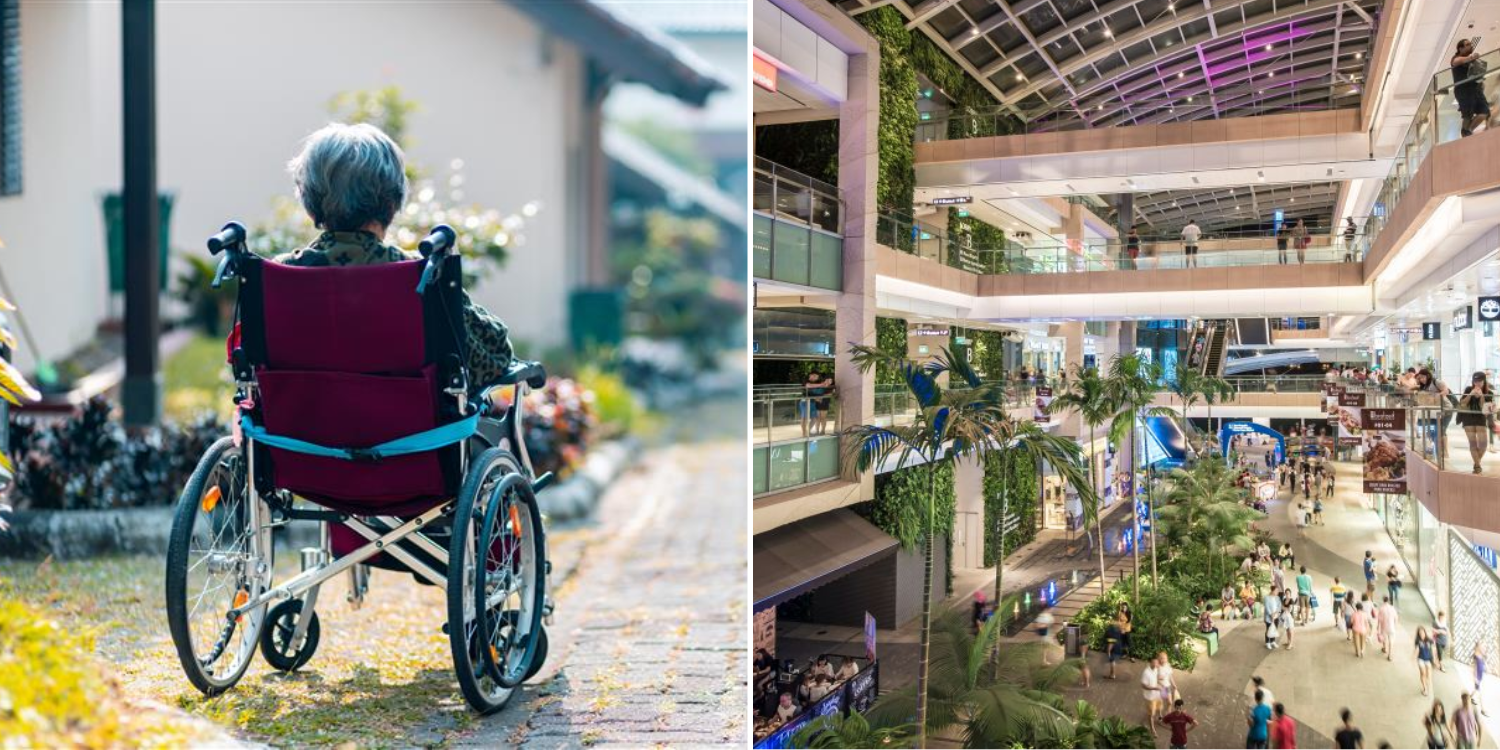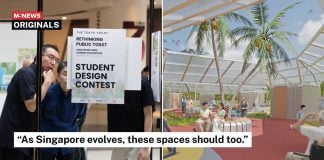Do Elderly-Friendly Malls Exist In Singapore’s Neighbourhoods?
It’s fair to say that Singapore is a mecca for shopping, what with the number of malls here.
The number might astound you — there are over 150 shopping centres scattered across this tiny island.
Each mall attracts different crowds, with older groups milling about in heartland areas like Bishan and Serangoon.
You’ll find uncles sitting around enjoying the cool air-conditioning while aunties leisurely push their shopping trollies.
But just how accessible are these shopping malls for the lesser abled of this demographic?
Malls in neighbourhoods with a large elderly population
Seniors living in Singapore’s heartlands may have a few favourite haunts around the hood.
After all, they can’t be spending all their waking hours at home.
If we had to guess where they’d be, we’d pick the void deck, nearby coffee shops, and sometimes, the comparatively more luxurious shopping malls.

Source: Link REIT
In places like Marine Parade, Bishan, Jurong East, and Serangoon, one may come across more seniors strolling in shopping centres.
That’s because these neighbourhoods have a higher percentage of residents aged 65 and above — at least 20%, to be exact.
Using this data to shortlist a few well-known malls in each estate, MS News takes a deeper look to see if they are well-equipped for more senior patrons.
This includes the number of elderly-friendly toilets, the width of the walkways to accommodate walking aids, and considerations like benches and the mall’s overall layout.
NEX in Serangoon has 19 accessible toilets
Located in the North-East residential area of Serangoon, NEX is almost always crowded with residents and visitors alike.
The 600,000 sq ft shopping centre has two supermarkets and a variety of eateries, making it popular with families and hungry schoolkids.
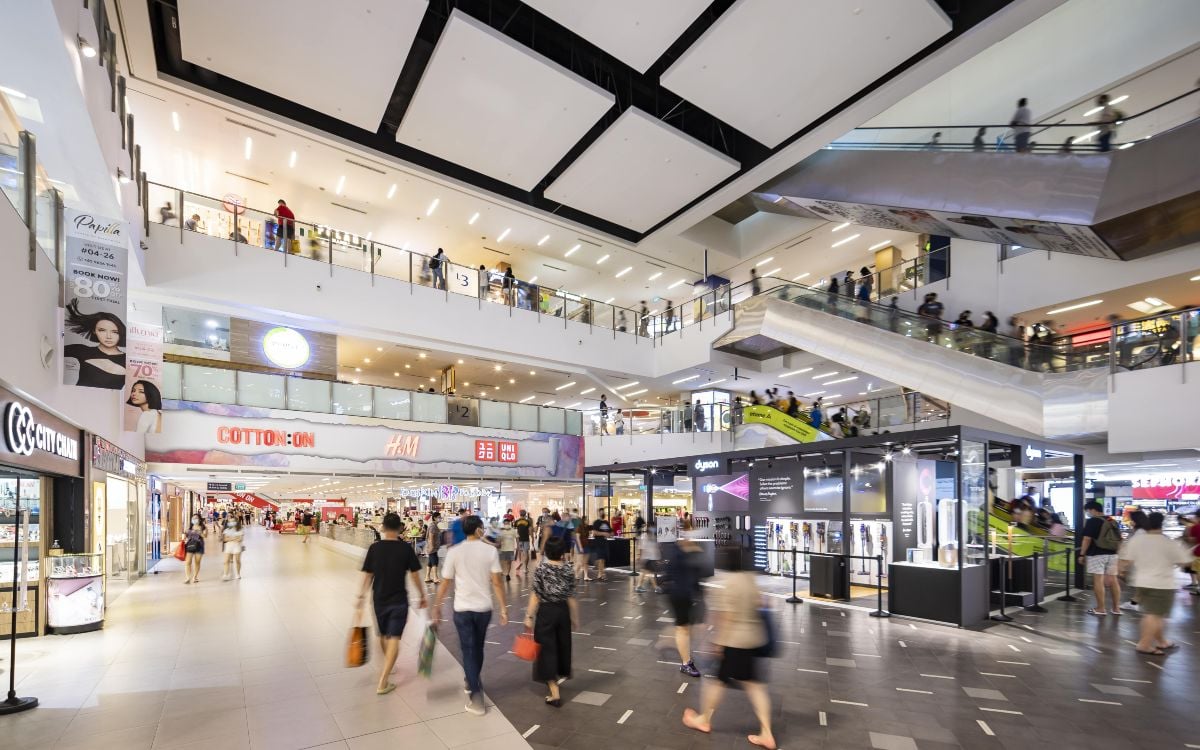
Source: The Edge Singapore
During off-peak hours, however, one would notice older patrons walking about.
Head over to the adjoining bus interchange, and you’ll also see some seniors chatting and resting on the public seats.
Within the mall itself, however, there aren’t that many benches.
There are few in Basement 2 and along some walkways, such as outside Isetan on Level 1, though they seem to be short resting points rather than communal areas for socialising.
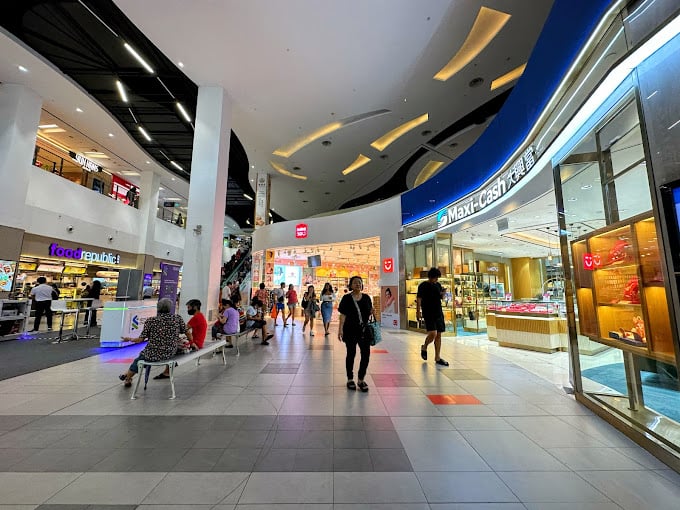
Source: Google Maps
There is, however, have a rooftop garden with some sheltered seating.
That said, NEX’s layout is pretty complicated as the shops are not centralised around one atrium.
This makes finding one’s way around a little difficult, especially for seniors who’d have to look for the right elevators and escalators to the rooftop.
The biggest perk of NEX, though, is that it boasts a total of 19 handicapped toilets across its seven floors.
These toilets are also conveniently located near the lift lobbies — of which there are three in the mall.

Source: NEX
While NEX does have several passages that are spacious and wide, certain corridors — including those leading to and from the toilets — are narrow.
For seniors with mobility issues, navigating a wheelchair or making their way through the space with a cane or walker may be challenging.
JEM & Westgate near Jurong East MRT boast spacious corridors
Heading to the West, we have JEM and Westgate which — layout-wise — look a bit more straightforward, especially the former.
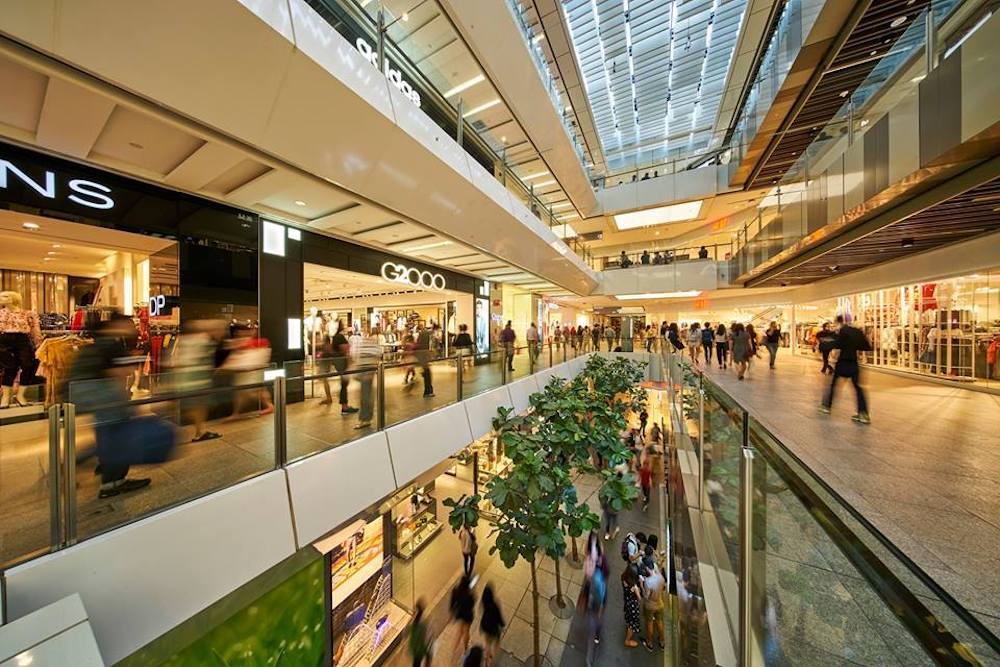
Source: Joshua Dasey via TimeOut
Its stores are clustered around a central area, with wide walkways that don’t snake around.
Compared to NEX however, JEM has fewer handicapped toilets — eight across its six floors. The shopping centre also has two lift lobbies in the main building.

Source: JEM
Westgate, which is located right next to JEM, even has indoor seating areas where patrons can rest amongst the greenery.
Similar to its neighbour, the shopping centre has wide walkways with a more generous central atrium.
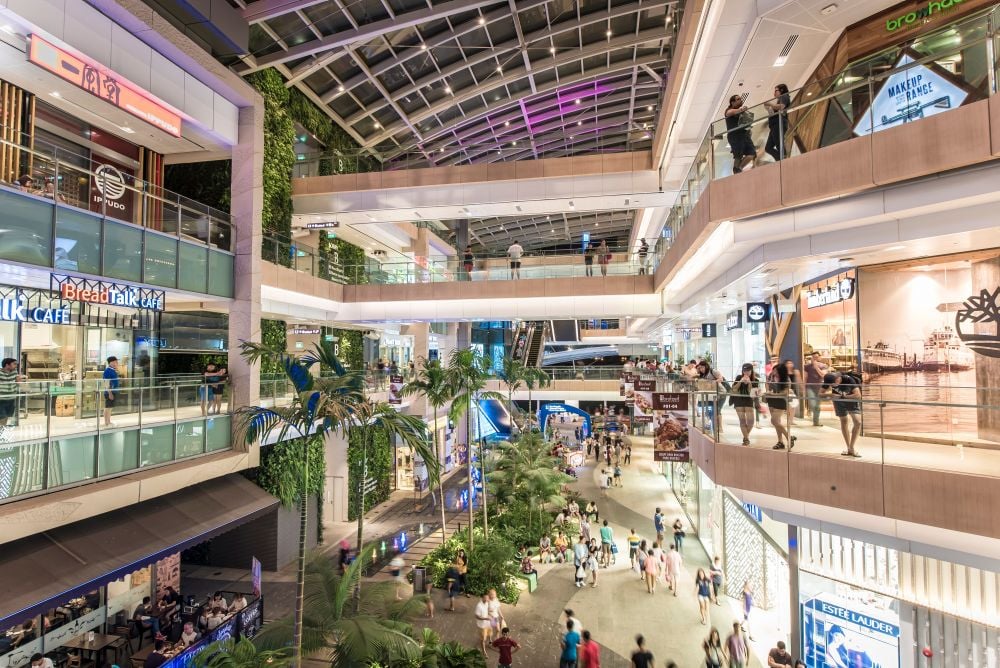
Source: CapitaLand
The two west-side malls are also special in the sense that they’re connected to Ng Teng Fong General Hospital by a sheltered walkway network.
Parkway Parade in the East provides complimentary hearing aids
From the West, we travel to the East where Parkway Parade has been serving nearby residents since 1984.
As the population gets older in Marine Parade, however, is it an elderly-friendly mall?
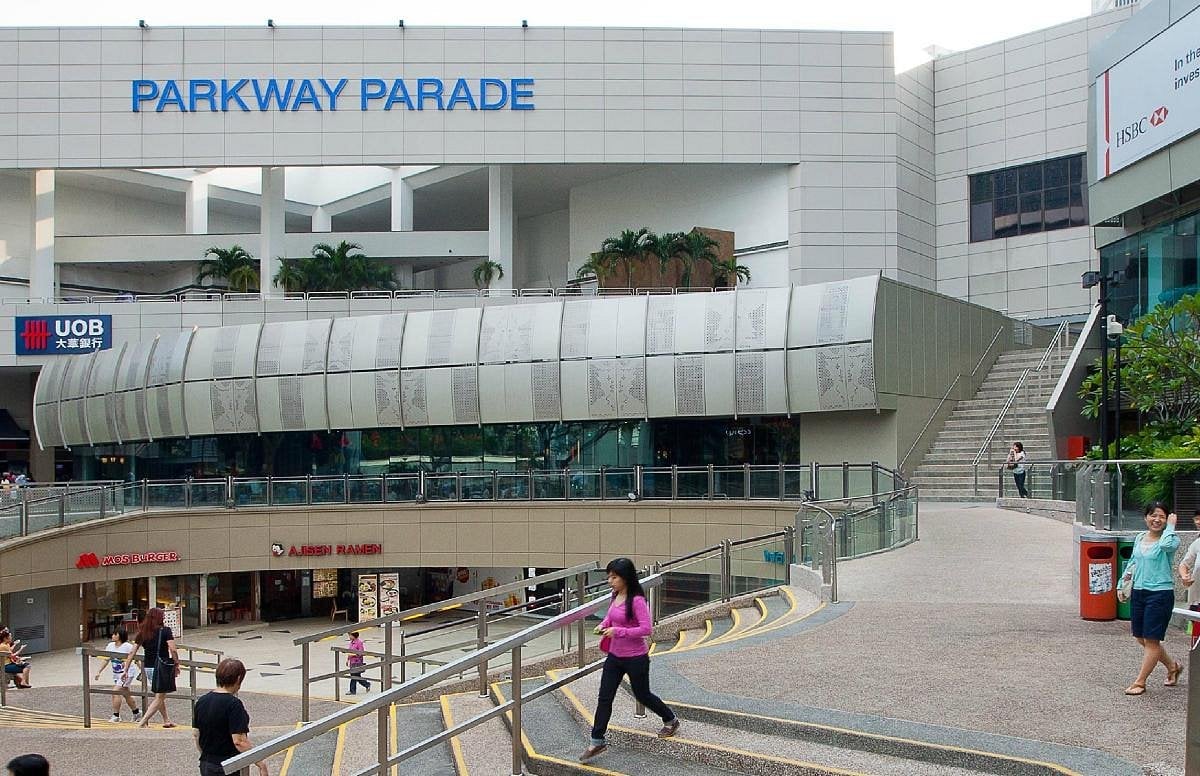
Source: Trip Advisor
According to its website, some considerations have been made when it comes to the mall’s services.
For instance, the mall’s concierge offers a complimentary wheelchair hire with no booking required beforehand.
The concierge is easily visible and accessible on Level 2, nearby the passenger lifts and escalators.
Additionally, it is equipped with a hearing enhancement system that allows those with hearing impairments to receive sound signals without interference from background noise.
When it comes to elderly-friendly hardware, the mall has 10 handicapped toilets. Most of them are concentrated on the lower floors near the eateries.
Compared to the other malls in this list, however, Parkway Parade is the least accessible to public transport.
This is set to change next year with the new Marine Parade station opening right next to it.
Junction 8 conveniently connected to Bishan MRT
Though Parkway Parade had to wait years for an MRT station, Junction 8 is almost synonymous with Bishan MRT.
There is even an exit that leads directly to the basement level of the mall.
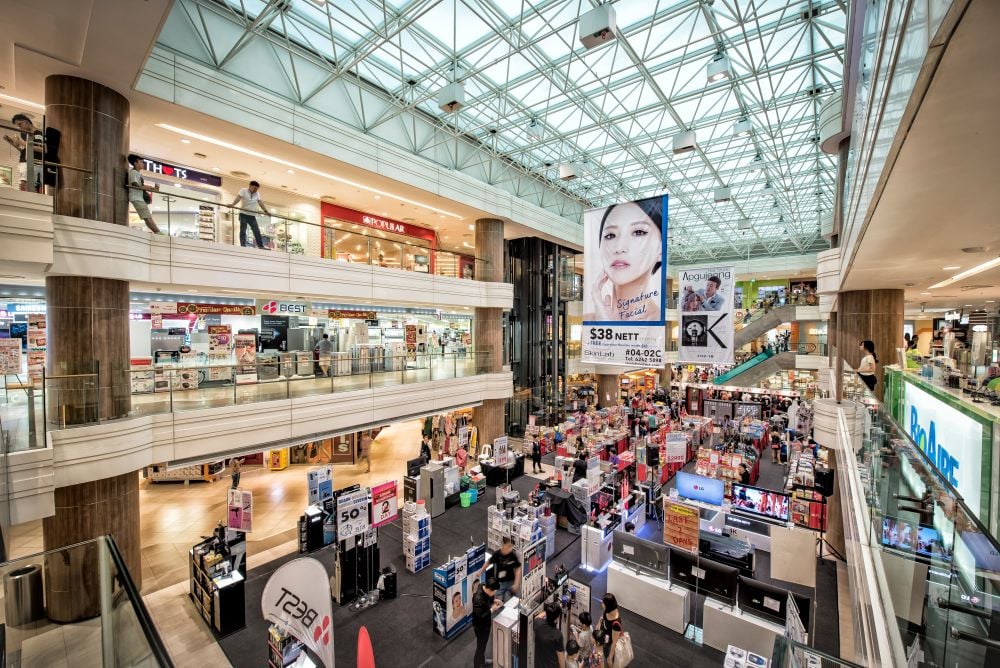
Source: CapitaLand
Despite its close proximity to public transport, Junction 8 has the least number of handicapped toilets on the list.
Patrons will find only six of these across the five levels of the shopping centre.

Source: Junction 8
The layout of the mall isn’t that simple either, as the shopping centre splits into two “wings” on street level.
It gets more straightforward from Level 3 onwards, where the shops surround the central atrium space.
Apart from the seating areas near the street-level MRT exit, there also aren’t many benches around the mall.
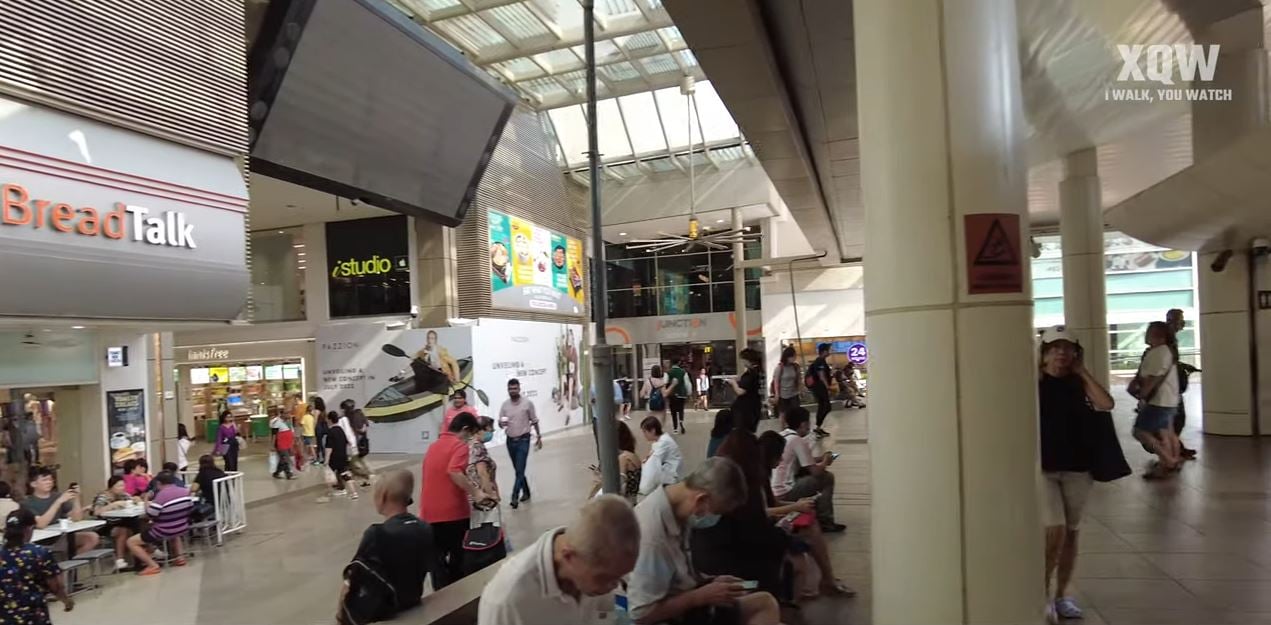
Source: Xiao Qiang Walker on YouTube
Age-friendly malls in other countries
Neighbourhood malls in Singapore do seem to be fairly elderly-friendly, equipped with the bare minimum of wide walkways and handicapped toilets.
Some have even gone above and beyond in their services to consider the needs of lesser-abled seniors.
Looking beyond Singapore though, countries with a high elderly population like Japan have adopted and refined “age-friendly” practices in malls for some time now.
Aeon Grand Generation’s Mall in Kasai, Tokyo is one such example.
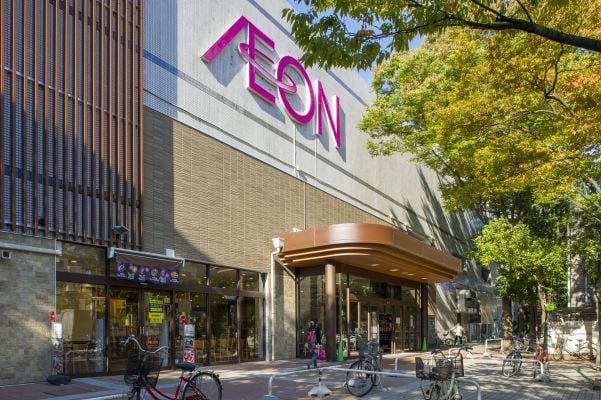
Source: Mirai Corporation
This mall has slowed down the speed of its escalators and widened its corridors, even installing a slip-resistant mat on a 180-metre indoor walking path.
Additionally, each toilet compartment has a crutch holder.
Even in its supermarkets, there are thoughtful considerations like lowering the shelves and enlarging the fonts of the labels.
The opening hours have also been adjusted to 7am to better suit the elderly’s lifestyle.
Meanwhile, the Hyundai Seoul mall in South Korea is also another exemplary case study.
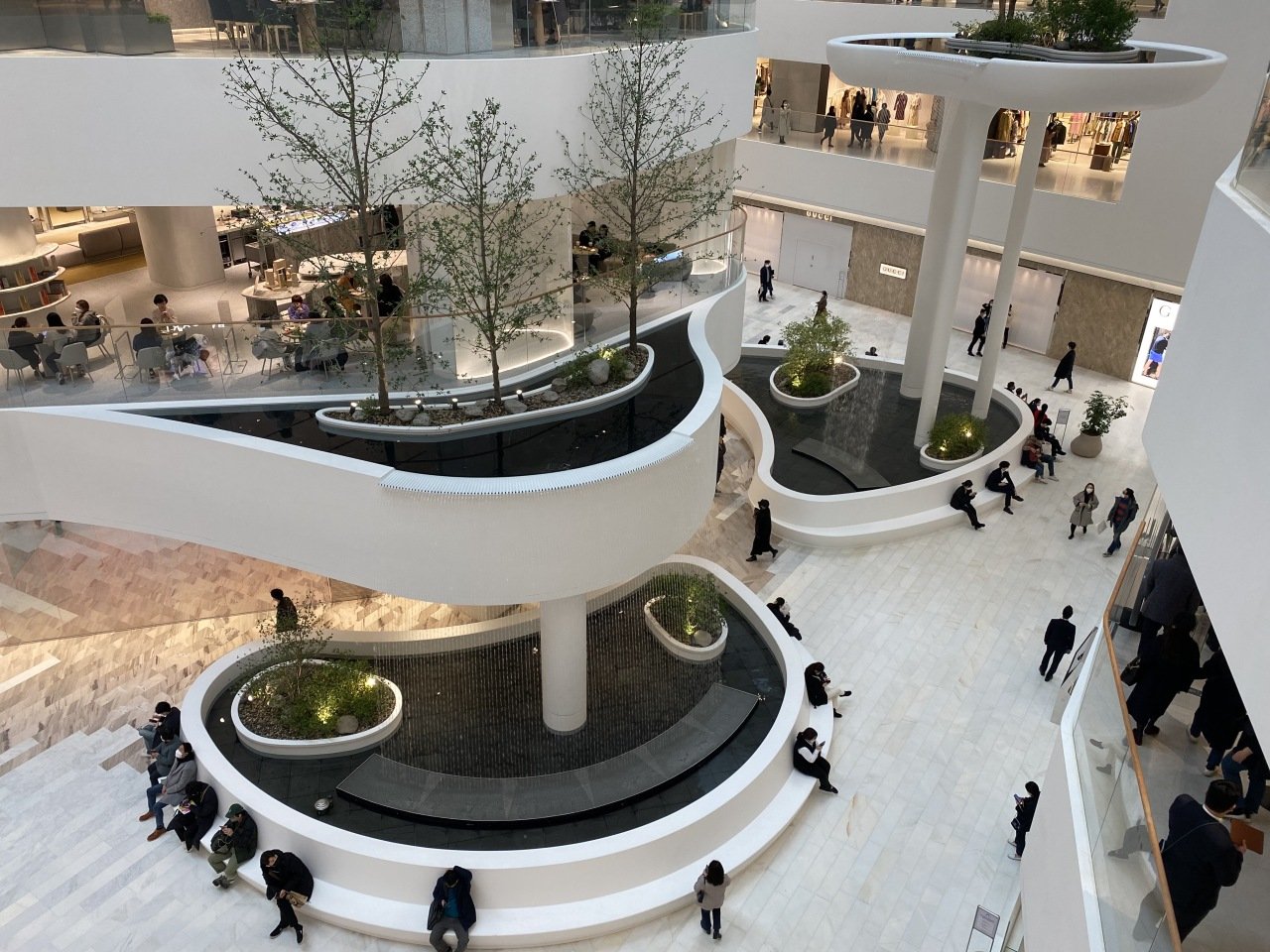
Source: The Korea Herald
The shopping centre boasts barrier-free corridors which are eight metres wide.
With so much space, patrons both young and old won’t be packed like sardines even during peak periods.
The mall’s pièce de résistance, however, is that 49% of its space is dedicated to leisure and social purposes.
This means plenty of seating areas for seniors to rest their bones.
Singapore malls should adapt to aging population’s needs
It’s no secret by now that Singapore is facing an ageing population issue, with one in six Singaporeans being aged 65 or older in 2020.
This number will only get higher in the next decade. In 2030, a quarter of Singaporeans will be seniors.
As such, there is a rather urgent need for our society to cope with a population that might not be as spritely as they used to be.
Some seniors in Singapore have expressed their desire for elevated shopping malls.
Speaking to The Straits Times (ST) in 2018, a 66-year-old said,
I hope our shopping malls can become inter-generational community hubs.
“The malls should be a place where the elderly have access to important information, fitness facilities to build up our strength and mobility, and common spaces with free Wi-Fi where we can hang around and interact with young people,” he added.
Are Singapore shopping malls ready to cope with more elderly patrons?
Thankfully, Singapore malls aren’t resting on their laurels and are making improvements.
This year, Channel NewsAsia (CNA) reported that some stores in shopping centres will have “calm zones” during designated hours.
Dimmed lighting and lower music volume will cater to the needs of the elderly and neurodivergent.
Meanwhile, certain stores like OSIM will also function as dementia go-to spots.
Though some of Singapore’s newer malls are better designed for older folks, more can be done to upgrade the older malls — especially in our neighbourhoods.
By taking examples from other countries on best age-friendly practices, we could aspire to build a safer and happier Singapore for all.
Also read: ‘Show Some Empathy’: S’poreans Think Malls Should Allow Parking Of PMAs Inside
‘Show Some Empathy’: S’poreans Think Malls Should Allow Parking Of PMAs Inside
Have news you must share? Get in touch with us via email at news@mustsharenews.com.
Featured image adapted from CareInc and CapitaLand, for illustration purposes only.
